
In 2018 I went to China. It was an epic journey lasting four weeks and covering nearly five thousand kilometres from Beijing to Hong Kong. For three of those weeks I was with Intrepid Travel’s China Experience tour. We travelled by van, bus, train, and boat. I wrote 29 posts about it! This photo essay is a collection of photos that didn’t quite fit into any of the posts. I’ve been saving them all this time to eventually share them. At last I’ve gotten around to it. I’ve also included some from earlier posts that I’ve reworked and are worth a second look.
Here then are images of the Chinese people at work and at play, deeply involved in what they are doing, or just hanging out in the street, crowding the main tourist sites of their country, or singing in the parks. People living their lives. I hope I’ve managed to capture something of both the universal nature of humanity, and of the unique way that the Chinese do it. It was a privilege, and a pleasure to explore their country. At times it was overwhelming. At times it was completely mind-blowing. At times it was exciting. At times it was exhausting. Mostly it was absolutely fascinating.


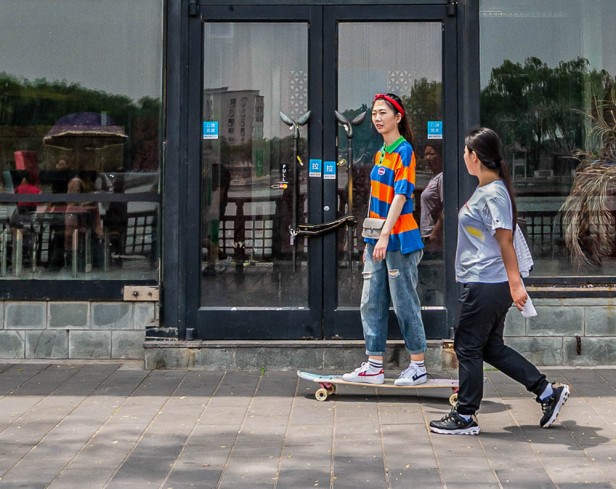
One of the things I came to love about China is that people gather in large numbers in public parks to participate in: a game of cards or Mahjong, ballroom dancing, tai chi, aerobics, martial arts, sword and fan dancing, ribbon twirling, tai chi tennis, Chinese chess, kite flying, and my personal favourite, playing and singing traditional Chinese opera. I came across a group in Jingshan Park and stopped to take it in. At the end of a couple of songs I clapped and everyone was delighted, especially me. The sheer joy in their activity lifted my spirits and filled me with joy too.


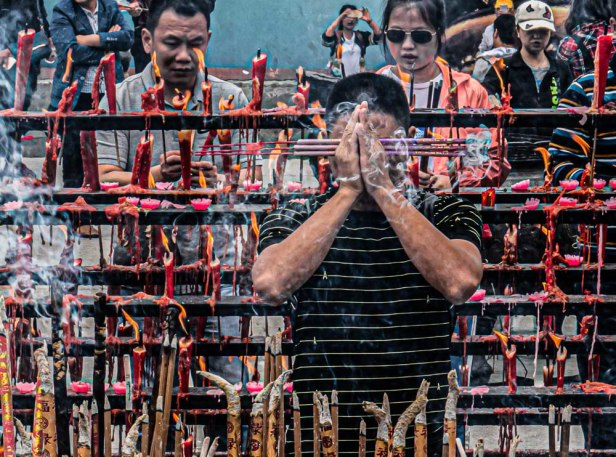


The Muslim people of China are a result of the Silk Road, and many are direct descendants of Silk Road travellers. It was the Persian traders who brought Islam to China in the 7th century. They came to, and congregated in, what is now Xi’an. Some settled there and gradually intermarried. The Chinese converted to Islam and the Persians assimilated Chinese culture. Eventually over the centuries they integrated so as to now be indiscernible. Today there is a population of 65,000 Muslims in Xi’an.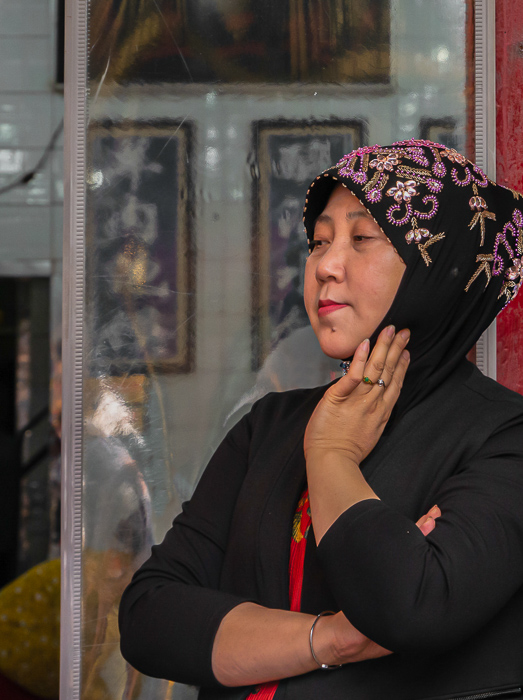

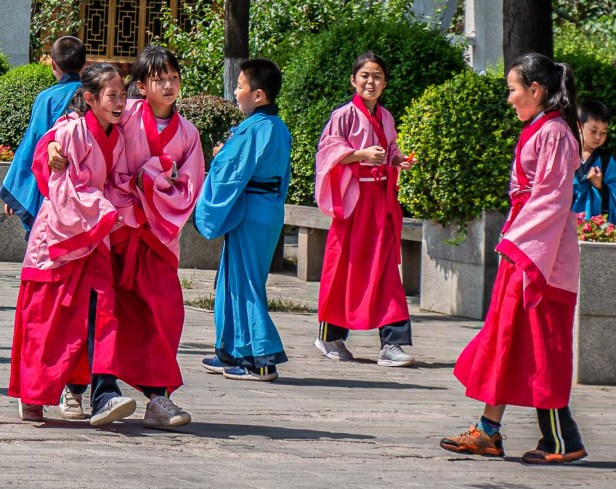
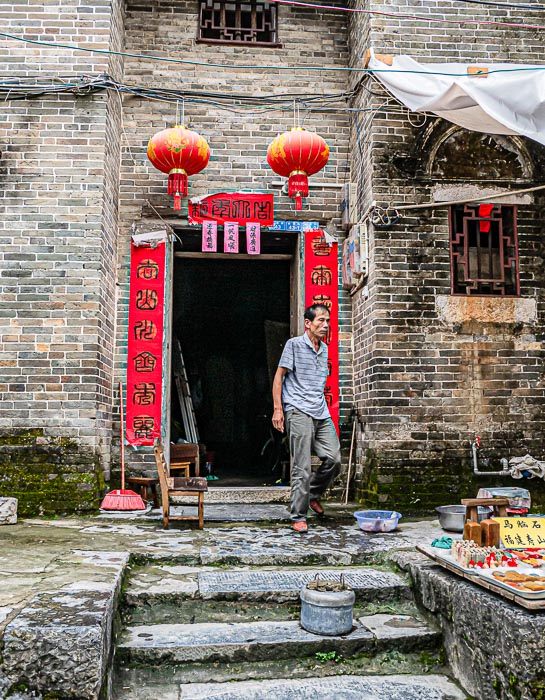









Beijing’s hutong areas have escaped the modernisation of the current manic economic boom that is China. It’s similar to the old town of many cities with its narrow winding streets that clearly were not built for modern transportation, and yet the hutongs of Beijing are completely unique. The oldest date back over six hundred years. The following photos were all taken in Beijing’s hutongs.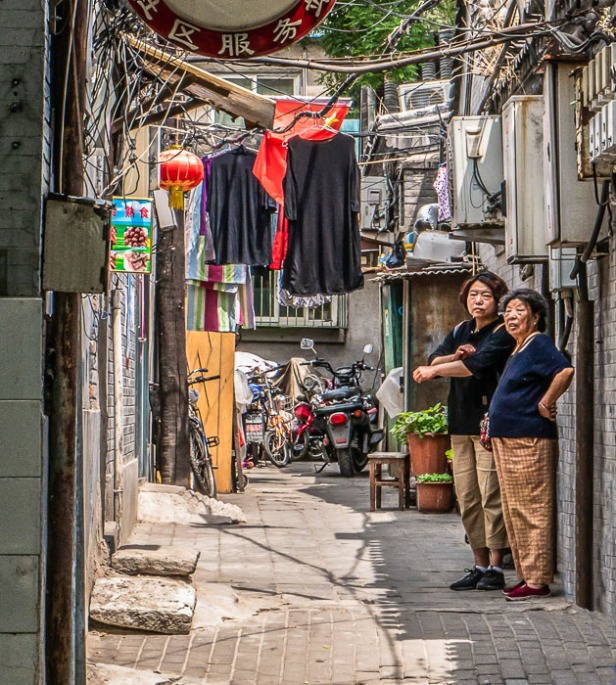

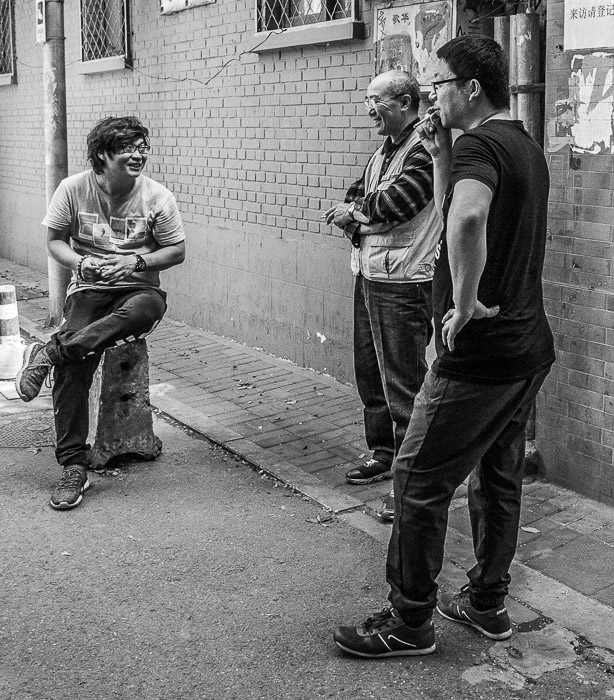

Domestic tourists are exploring their own country in record numbers these days.

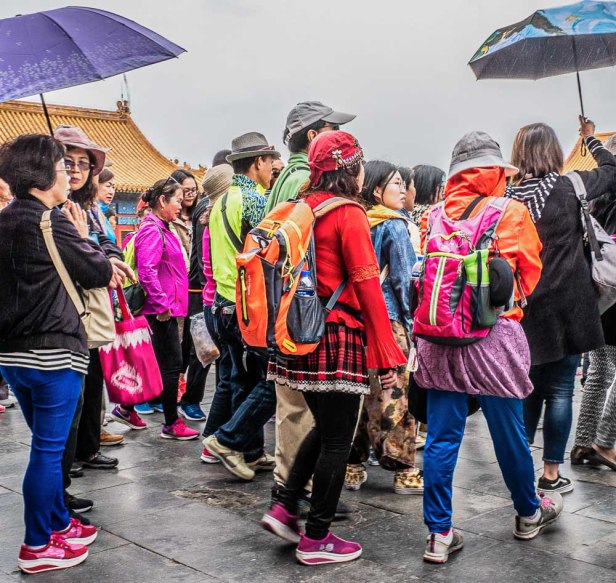

Links to all other posts about this truly phenomenal trip through China can be found at the end of this post.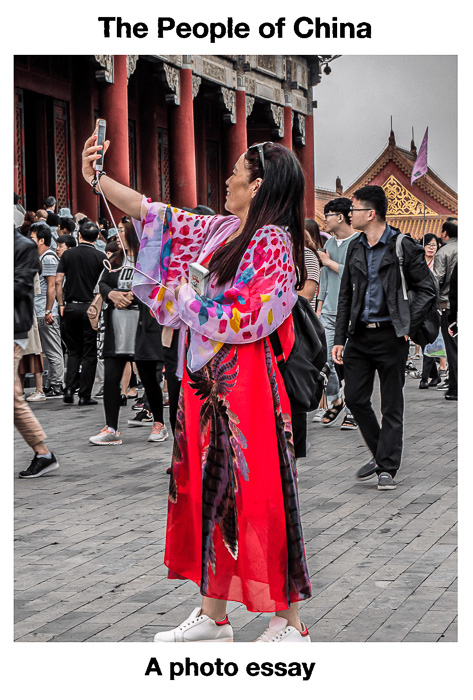
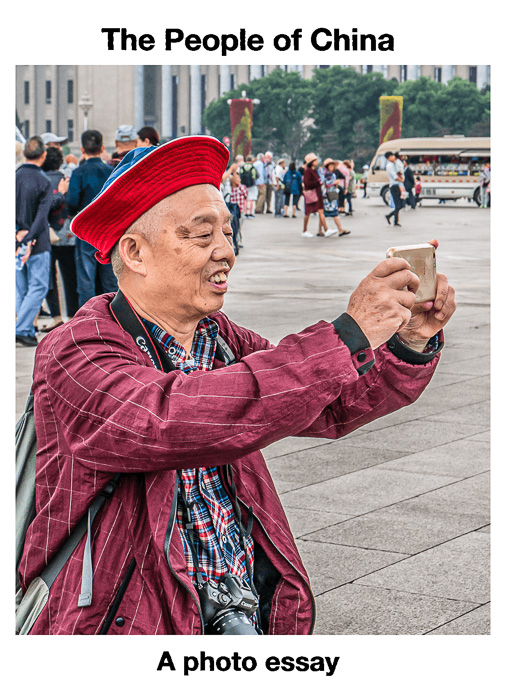
All words and images by Alison Louise Armstrong unless otherwise noted
© Alison Louise Armstrong and Adventures in Wonderland – a pilgrimage of the heart, 2010-2021.

I remember many of your posts Alison and my experience at the Beijing’s hutong…and the Olympics…seems long ago but like you it was wonderful and fascinating for me… many wonderful humans still connected today ☺️🤓🙏 lovely post Alison great candid shots … smiles hedy
LikeLiked by 1 person
Thanks so much Hedy. You went to the Beijing Olympics? I bet that was an amazing experience. China is pretty intense I found, but so fascinating and wonderful.
Alison
LikeLike
I really liked the report, very well photographed.
LikeLiked by 2 people
Thank you so much Ana. I’m glad you enjoyed it.
Alison
LikeLiked by 1 person
Some wonderful images here, Alison. Your street sweepers conference made me smile 🙂 🙂
LikeLiked by 2 people
Thanks Jo. It was a fun post to put together. Such a vibrant country.
Alison
LikeLiked by 1 person
Great images. A window into a part of the world which few of us have visited.
LikeLiked by 1 person
Thanks so much Jerry. It was actually my second trip to China. My first was in 1978! The difference was truly remarkable. China is definitely worth a visit.
Alison
LikeLiked by 1 person
One for the bucket list!
China has gone through a lot of change in that time, so it must have been an amazing experience.
LikeLiked by 1 person
It was almost like going to a different country.
LikeLiked by 1 person
My husband and I went to China with a friend from China in 2012. It was the same for me, awesome, at times overwhelming, beautiful in areas, culturally enlightening! I love your pictures!
LikeLiked by 1 person
Thanks so much Wendy. I found it to be an extraordinary country. Awesome, overwhelming, and fascinating. I’m so glad I went. I learned so much, and feel I’m learning even more now just looking at these pictures. It’s a remarkable culture.
Alison
LikeLike
What an incredible trip! I only spent a few days in Beijing on my way to North Korea, but it was fascinating. Love the hutongs. Gorgeous photos, as always.
LikeLiked by 1 person
Thanks so much Julie. It was a really amazing trip. I spent quite a bit of time in the hutongs, both alone before the tour and then again with the tour. So interesting. I bet North Korea was eye opening.
Alison
LikeLiked by 1 person
Incredible. Brought back memories of my trips…. The pink raincoats at the For idem City entrance, the numerable activities. Was motivated to learn Tai Chi during 8 yrs stay in Hong Kong plus walking and hiking.
LikeLiked by 1 person
Thanks Indra. I loved those raincoats and saw the same again at the Great Wall – loved the colours (and tried hard not to think of the plastic waste – it’s such an issue!). Eight years in Hong Kong must have been fabulous. I love HK, have been 3 times and would go back. It will change though in the coming years as China takes over I think.
Alison
LikeLiked by 1 person
By 2014 it had already started changing with influx of Mainlanders. The old Brit culture was fast disappearing with rude people taking over. Most of our friends left, going back to their countries. We too returned to India , even though permanent residents. We would return for months but since 2 yrs are stuck. There is so much to see & do.
LikeLiked by 1 person
Wonderful pictures of the people of China. They say so much.
LikeLiked by 1 person
Thanks so much Darlene. I’m glad they speak to you. Always trying to capture real life.
Alison
LikeLiked by 1 person
It’s amazing to see even in this age of tech and knowing how advanced China is on that front that people are going out of their way to do activities that get away from tech
LikeLiked by 1 person
China is incredibly advanced tech-wise, but exercise (in any form) for instance is strongly encouraged, and then there is the all the community activities in the parks that I loved so much. You just didn’t see people with their heads stuck in cell phones much.
Alison
LikeLiked by 1 person
That’s amazing! I do wonder what it’s like in the cities there though. The people in the country seem to have a healthy attitude to tech at least
LikeLiked by 1 person
Most of these photos were taken in cities. Gathering in the parks to play happened everywhere.
Alison
LikeLike
Oh good!
LikeLiked by 1 person
I remember some of your China posts from the Intrepid trip. You were a busy gal! I love this collection of pics that didn’t “fit” in any of the other posts. 😀
LikeLiked by 1 person
Thanks so much Felicity. I’m glad you enjoyed this collection. It was such an epic trip that I wanted to share everything.
Alison
LikeLike
Thank you so much, Alison! Wonderful!
LikeLiked by 1 person
Thanks so much Carsten. My pleasure! I’m glad you enjoyed it.
Alison
LikeLiked by 1 person
I really did!!!
LikeLiked by 1 person
Wonderful people shots of everyday life in China!
LikeLiked by 1 person
Thanks so much Ruth. I’m glad I could capture something of ordinary life there.
Alison
LikeLiked by 1 person
“Taking a break..”, Hanging out…”, Returning to the boat…”, and “Hauling recyclables…” are standouts for me in this series – great job. I wish China would do better by the Uyghur people, Tibetans, Hong Kongers, and other minorities. I doubt things will get better soon but maybe with China’s increasing wealth, more citizens will begin to speak out.
LikeLiked by 1 person
Thanks so much Lynn. I do love hearing which are the faves – everyone is drawn to something different. Don didn’t understand why I wanted to include “Hauling recyclables” but I knew it had something.
I too wish the Chinese powers that be would do better by the minorities but I’m not holding my breath. I think the Muslims in Xi’an will be left alone, but not the others sadly. From what I’ve read HK is pretty much done for – the one country/two systems agreement is slated to end in (I think) 2027.
Alison
LikeLike
Excellent collection. You’ve got a great knack for catching candids in context. It gives a real sense of place.
LikeLiked by 1 person
Thanks so much Dave. I certainly try to give a sense of place, to capture something authentic, so I appreciate your comment.
Alison
LikeLiked by 1 person
So excellent! They bring back warm memories for me, too. I sure can’t wait to get on a plane and fly somewhere totally different again soon!
LikeLiked by 1 person
Thanks so much Lexie. As usual I really like to explore, and to capture, ordinary life as much as I can.
I too am looking forward to travelling again! I’ve been doing a little local travelling and will post about it soon – fun, but not quite the same.
Alison
LikeLiked by 1 person
You always seem to know how to take good photos of the people you see when you’re traveling. Such images show us that despite our different cultural backgrounds, we have more things in common than what we might think.
LikeLiked by 1 person
Thanks so much Bama. I like what you say – that they show how much alike we are. The world needs more of that I think. Everyone should travel. I think so much prejudice would fall away if that were possible.
Alison
LikeLiked by 1 person
Never been there😂😂😂😂
LikeLiked by 1 person
You should go! It’s amazing.
Alison
LikeLike
I recall many of your posts from China Alison. 29 is an astounding amount of content. Bravo to you. I enjoyed seeing this compilation of those photos that did not fit. Especially the little girl on the motorbike awaiting her Dad.
LikeLiked by 1 person
Thanks so much Sue. I just seemed to have a lot to say about my time there lol, and had so many extraordinary experiences that I wanted to share *everything*!
I loved the little girl on the bike. It has a “hurry up dad!” kind of feel to it. We also were buying street food for breakfast.
Alison
LikeLiked by 1 person
Amazing collection of photos Alison! I was struck by what you said about the Chinese gathering in large numbers in public parks.While I’m usually not a fan of crowds, there is something uplifting about seeing large groups of people fully engaged and enjoying games and activities. Perhaps it’s especially appealing to me now after our long isolation.
LikeLiked by 1 person
Thanks so much Caroline. The parks there are amazing. Every city has a People’s Park, and the people use them. I didn’t find any of them crowded particularly – busy yes, but not crowded. And the range of activities was pretty amazing. Also fitness is strongly encouraged so there was all kinds of aerobics and dancing and tai chi. I just loved it – the complete lack of inhibition.
Alison
LikeLike
Wow – such beautiful photos as always. You really do inspire me to visit China. Seeing it through your eyes is a real treat.
LikeLiked by 1 person
Thanks so much Sue. I’m glad you enjoyed it.China is amazing. Not always easy, but definitely fascinating and worth visiting.
Alison
LikeLike
You really have an eye and can tell a story through the lens. I enjoyed this overmuch.
LikeLiked by 1 person
Thanks so much Laureen. I’m glad you enjoyed it.
Alison
LikeLike
This post brought back some great memories of China. And sure made me glad we visited when we did. We were there in 2018 too with Viking Cruises for a cruise and land tour. I don’t often take people pictures. But I love the every day images you caught. Just love the one of the girl lying on the motorcycle. I could write a whole tale about that one!
LikeLiked by 1 person
Thanks so much Linda. I always take people pictures, they such an important part of the travel experience, though for sure it’s important to be discrete about it. I too love the one of the little girl – so authentic – hurry up dad, I’m bored! Lol.
Alison
LikeLike
Love your portrait posts! They have so much soul. It is always interesting to watch people. Great photos and an inspiration to add this to my bucket list.
LikeLiked by 1 person
Thanks so much Alma. I do try to capture authentic spontaneous images of the people. Like you I always find them interesting. Definitely recommend China. Not easy, but fascinating.
Alison
LikeLike
~I love portraiture photography and these captures are fabulous. I feel for the guy on the long train journey – I can definitely relate to that look! Thanks for sharing your travels, the photos really speak volumes.
LikeLiked by 1 person
Thanks so much Angie. I’m glad these images spoke to you. Capturing the people is such an important part of documenting a journey I think.
Oh yeah, I get it about the guy on the train lol!
Alison
LikeLike
Stunning photos! You captured the essence of China perfectly. Brought back memories of my time in Beijing and Guilin.
LikeLiked by 1 person
Thanks so much Ummi. I appreciate your comment, especially from one who’s spent time there.
Alison
LikeLike
I spent 2 years living in China and these photos capture everything I love about the country, and everything that people just don’t know if they haven’t been. It’s a beautiful place with incredible people. I love that so many people, like you said, spend time in parks and outdoors. I see you went to Emei Shan also, one of my favorite trips while I was there
LikeLiked by 1 person
Thank you so much Emma. I really appreciate you saying that I’ve captured Chinese life so well since you’ve lived there and know what it’s like. It’s an amazing place.
My time at Emei Shan was definitely a highlight. Here’s a couple of posts I wrote about it in case you’re interested.
Alison
LikeLike
I love China and I can say that you captured people of China incredibly well. I always find taking pictures of people difficult while travelling for many reasons. I think you have some secrets how to do this. Thanks for sharing!
LikeLiked by 1 person
Thank you so much Anita. I found China so fascinating.
I think I’m just fairly brazen about photographing people, but also mostly try to be discrete about it because I want candid shots. It’s allowed as long as you’re in a public space. It it weren’t then street photography and documentary photography simply wouldn’t exist. In over 10 years of travelling pretty much full-time I’ve rarely found it to be a problem.
Alison
LikeLike
Amazing how you capture people and the culture though your camera lens. Many of these need to hang in a gallery. I think we travel the same way – to immerse ourselves where locals are.
LikeLiked by 1 person
Thanks so much Renée. I love photographing the people. To me that say so much more about a place than buildings or food or scenery. I agree – like you I love to get away from the main tourist areas and immerse myself in the local environment.
Alison
LikeLike
I really enjoyed this collection of candid photos, Alison – you have such a knack for shooting street portraits. It feels as though not much has changed between my last visits to China in 2012 and your own in 2018, except for the plethora of shiny new smartphones! One thing I really loved about Beijing was the parks, and the fact that these grand old pleasure gardens once reserved for the Emperor are now well-tended public green spaces in the heart of town. It was so great to see people exercising, playing board games, and getting some fresh air at the Temple of Heaven. At one point I even came across a “market” in the park where parents were matchmaking to find a suitable spouse for their grown children!
LikeLiked by 1 person
Thanks so much James. I like street photography a lot. I like to try to capture what I can of ordinary life of the people of the country I’m visiting. Scenery and buildings and iconic sites are all fabulous, but it’s really the people, and how they live, that are most important I think.
I too loved the parks in Beijing, and all the activities of the people in the parks. I also came across a marriage mart – in the park in Chengdu. I guess it’s fairly common. So many girl babies were aborted that there’s now a huge surplus of young men so they have to be pretty special to score a wife. The women can afford to be fussy, and parents do all they can to find a wife for their sons.
Alison
LikeLiked by 1 person
Some cultures stink but I guess I’m into this.Love it…………
LikeLiked by 1 person
Thanks so much. I’m glad you enjoyed it.
Alison
LikeLike
Delightful. Wonderful peek into the everyday of China.
LikeLiked by 1 person
Thank you so much. China was pretty amazing, and a real contrast after having spent 18 days in Japan first.
Alison
LikeLike